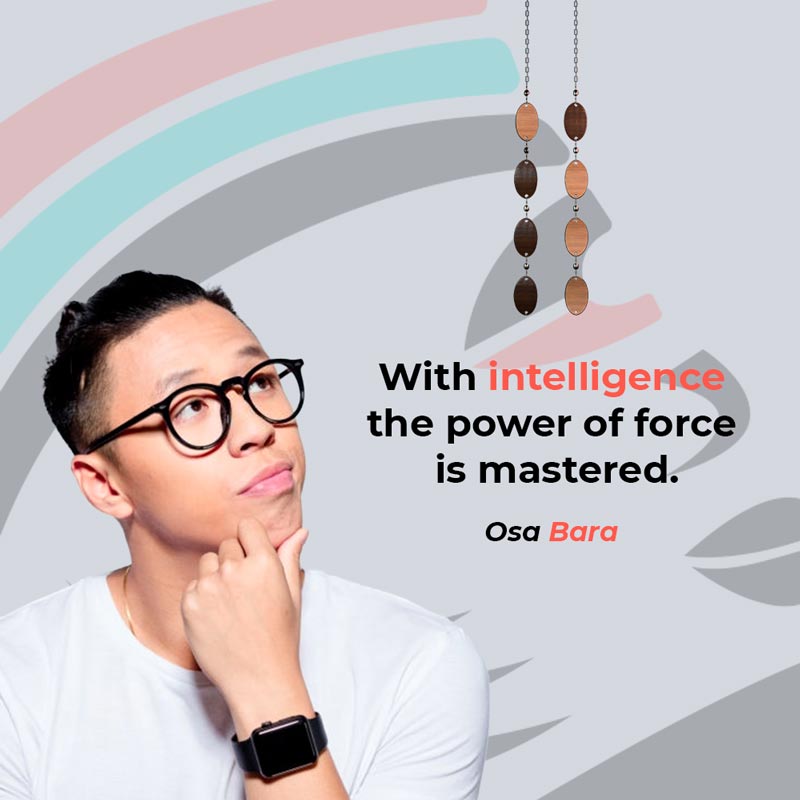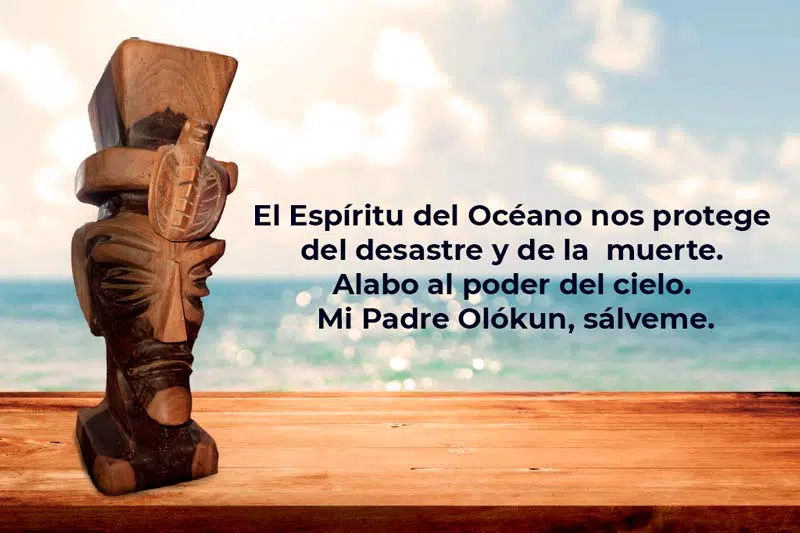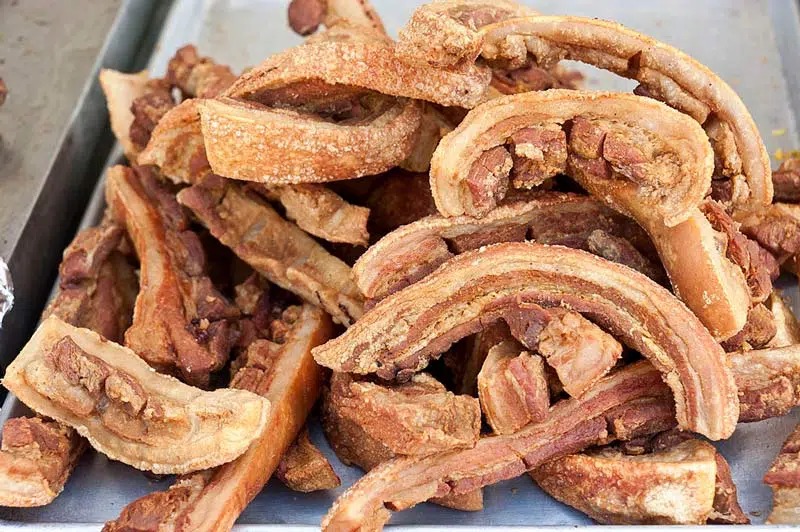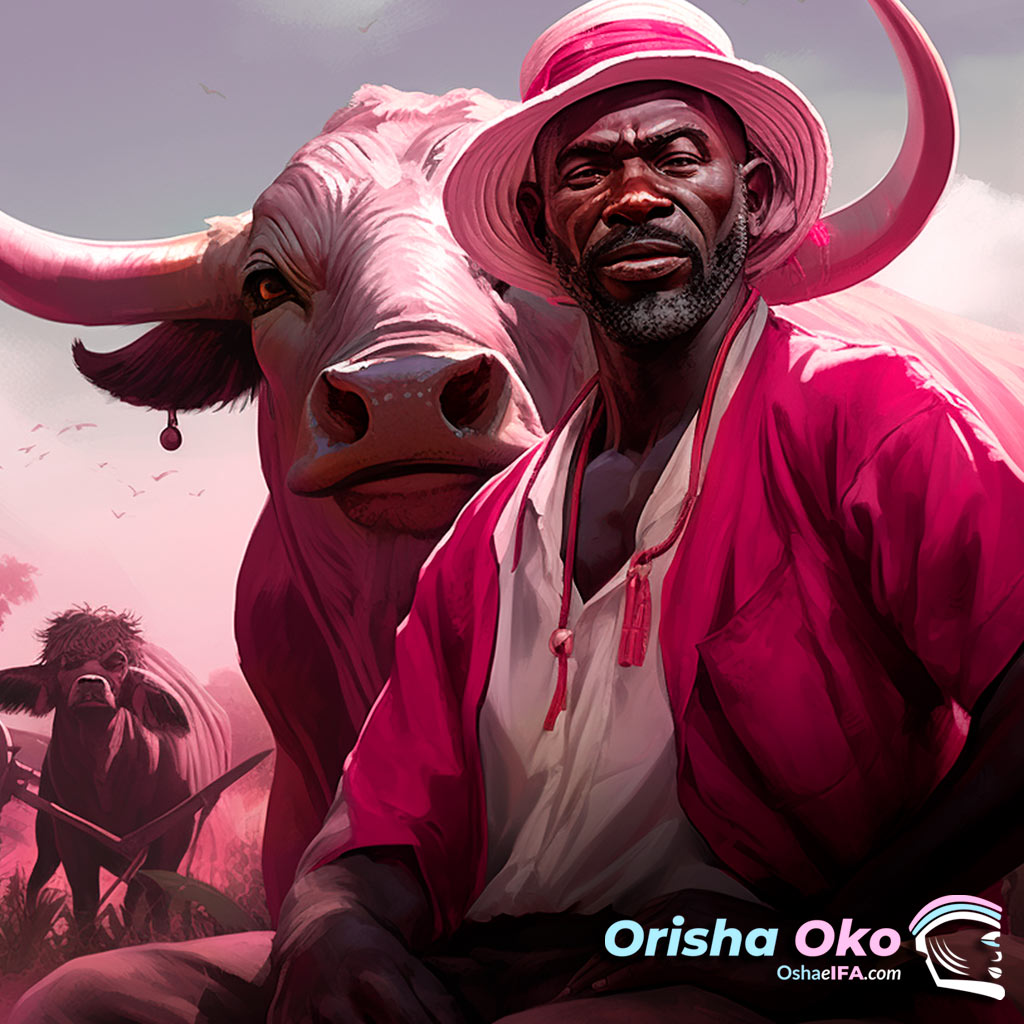Olokun: Who is the Orisha of the depths of the Sea?

The enigmatic Orisha of Santeria, inhabitant of the seabed, powerful and brave. Irresistible deity of health, life and prosperity. Owner of incalculable riches and great wisdom. Praised androgynous spirituality, that is Olokun.
Who is Olokun?
Olokun is the Orisha of the ocean and the depth of the sea. His mysticism reveals that he keeps secrets about life and death. His identity has always been the subject of much discussion, some agree that he is a hermaphrodite and others claim that he is half man and half fish due to his relationship with the sea. In conclusion, its nature is considered androgynous, both feminine and masculine.
The truth is that Olokun is an Orisha of great importance and feared by many. It is said that at the beginning of time he faced Olorun (The sun). It is also believed that due to his irate temperament he was chained to the bottom of the sea by the work of Obatala, since he tried to eliminate the human race by mercilessly flooding the earth, motivated by the lack of attention to his cult.
He was the one who gave Yemaya power over the marine waters adjacent to the shores and coasts. Their influence and conversation is revealed through the diloggun (snail) by means of the Iroso sign (4) and in Opira (when all cowries fall face down).
Features
Between her CARACTERISTICS he emphasizes that he always wears masks. He is a powerful deity whose worship is charged with much mystery. It represents marine power but from the deepest, most unknown and terrifying perspective. It is said that all the riches of the ocean belong to him.
Olokun's number is 7 or 9 and its multiples.
Its receptacle is a clay pot that can be painted in your colors or can also be adorned with elaborate images, symbols or masks bearing sacred charges.
Tools by Olokun
- 1 key.
- 1 life saver.
- 1 anchor.
- Rudder and oars of a boat.
- 1 crescent.
- 1 sun.
- 1 siren.
- 1 pot.
- 1 doll with open arms holding a mask and a snake in each hand.
All this accompanied by two snail hands and their respective ota.
Its attributes also include boats, seashells, seahorses, starfish, chains and secret cargo.
Colours
Its color is blue, white and black, however, we can see that their necklaces or elekes They are made in blue, alternating red, green, yellow, orange and in some cases black and white beads.
What are the children of olokun like?
Olokun's children are usually very attractive both physically and spiritually. They tend to waste a certain energy of mysticism that attracts people. They are usually very financially fortunate, prosperous, given to commerce and business. Lovers of money, luxury and the good life. Very sociable, charming, nice, friendly, good parents and self-sacrificing in their marital environment.
When they are badly aspected they can be greedy, traitorous, disloyal, angry, irresponsible, victims of excessive ambitions, lacking responsibility and family ties, given to the dark spiritual arts and destroy their enemy without looking back.
How is Olokun consecrated or received in Santeria?
Olokun's children in Santeria do not settle their Guardian Angel directly at the time of doing Kariosha (becoming a saint). What is done in these cases is to consecrate the person in Yemaya with orun for Olokun, respecting for this a series of previous ceremonials to give the tutelary Orisha account of the consecration of his son.
It should be noted that formerly the children of this deity during their consecration in Kariosha had an African parrot feather (aikodie) placed in the middle of the forehead in recognition of the fraternal relationship between Olokun and Yemaya.
It is clear then that this Orisha does not go to the head of any initiate, however, all practitioners of the rule of Osha (Santeria) and Ifa can receive it. In the case of Santeria, the foundation of this deity is delivered by the Olorishas (santeros) through a ceremony that involves the respective consecration of its foundation, accompanied by a very particular slaughter, since, after it an "Awan of Olokun" is performed.
In that ceremonial 21 meats of various foods are offered, with which, all those present are cleaned and particularly, the person who is receiving it. Then, all these elements are introduced with a cloth in a basket that is danced by the ile (house) and is transferred to the sea, being deposited there. Thus ending the consecration, since this foundation not going to Ita Imale, in other words, He is a saint who is received from Addimú because it does not emit conversation.
Depending on the current to which the Olorisha who delivers it belongs, it may be necessary to go to the sea before and after the consecration or only at the end of it.
"The Olokun of Osha", In other words, the foundation provided by the santeros, according to the stories told by the practitioners of this religious culture in Cuba, achieves great recognition and acceptance thanks to the Iyalorisha Fermina Gómez, who skillfully handled the secrets of this deity. Some claim that this foundation that we inherited from her is a path of Yemaya, which was identified as Olokun because it belongs to the depths of the sea.
In any case, the virtue and ashe of Ferminita when she consecrated him was such that it earned her recognition throughout the country, and it could be said that all the foundations of Olokun de Osha that we receive to date come from hers. She, in her immense wisdom, substituted the cedar tools for the lead tools that we currently use, and the olosa and olonas that she gave were settled on 9 ota (stones) accompanied by one or two snail hands.
In addition to this, the foundation of Olokun of the santeros carries motivated water that is accompanied by the spirituality of Aggana Erí which is the foam of the sea. It can be received by aleyos and Olorishas.
Olokun of Ifa, consecration

The foundation of «Olokun of Ifa » also known as agana ekun It differs from the Olokun of Osha in that it does not contain water, it is dry, because it is considered that it lives in the empty space of the rocks that exist between the core of the earth and the water of the oceans, in caves deepest and underground of the sea.
Its consecration tends to be much more laborious, and its foundation contains a great variety of secret charges that involve a considerable amount of ingredients. This foundation does emanate a conversation to advise the initiate who receives it, that is to say that if you go to Ita Imale, on the third day of his consecration. It can be received by aleyos, olorishas and awoses in general.
How is Olokun cared for?
In Santeria, Olokun is entertained with all kinds of ministries (grains) except those of black color. Malarrabia (sweet potato sweet), chicharrones, mariquitas (green banana fried in corojo oil), rositas or popcorn, black coquitos or coconut sweets with cane syrup, fish and smoked jutia, cane molasses, corn are offered. tender and toasted, salted corn wheels, corn muffins, gofio balls, yam balls, ground corn cooked with garlic, onion and butter; Coconut joy balls, brandy and all kinds of water fruits, especially the pin and the melon. Olokun can be offered everything Yemaya eats and her dishes are always taken to the sea.
The animals that are immolated are: ram, white rooster, chicken, pigeons, goose, duck, jicotea and guinea.

Herbs
Olokun lives attached to the red mangrove (iroko okun), which is a powerful talisman of this deity. Other of its herbs are: Coralillo, willow, pineapple, rosemary, cockroach, sea flax, mountain copalillo.
What is being asked of you?
It is an Orisha that is received and is usually asked to improve and preserve our health. He is also asked to provide prosperity and material evolution. It is very efficient when it comes to business and commerce. It can be relentless when fighting our enemies.
Spiritualities related to this Orisha
- Somu gaga: it is a spirituality represented by a snake, which symbolizes life.
- Akaro: it is a spirituality represented by a mask, which symbolizes death.
- Eph: represents and balances the spirits of Olokun and all their powers. He belongs to the Logu land and is the one who commands Olokun's head or mask that identifies him in front of the Awo Welede.
- Elelsu: it is a spirituality that lives in the sand of the beach and the seabed.
- Aye shaluga: it is a spirituality that lives in shells and sea snails.
- Ikoko: it is a spirituality that lives in the taro leaf.
- Olosa: it is a spirituality that lives in the lagoon.
- Osara: it is a spirituality that lives in the underground lakes.
- Olona: it is a spirituality that lives in the lakes.
- Bromu: it is a spirituality that lives in the desert and in all kinds of currents, including marine ones.
- Bronsia: is a spirituality that lives in tornadoes, including marine ones.
- Yembo: it is a spirituality that lives in the calm of the sea.
- Ekin olokun: Grandson of Olokun. Guardian of its foundation. His secret is kept in a small jar that hangs from Olokun.
- Aro: These are Olokun's twins. They are said to be the ones that drive you to do negative things.
- Ayerekoto: It is the spirituality that facilitates Olokun's communication with Shango, Oddudua and Orun. He lives outside his jar.
The legend of Olokun
It happened that by dividing the different territories of the earth among the Orishas, they were benefited with different spaces and powers. Olokun was awarded "Aiye Eko," a place known as Atlantis. It turns out that in the middle of that place, there was a mountain named: Adura. There, a couple lived (Ekini and Ibacon). They conceived a single daughter named Ayaroma Eluso. When his parents died, Olokun met her and fell in love with her. He immediately made her his wife by conceiving 7 twins.
When humans began to populate Aiye Eko, Olocun decided to make his domains inaccessible by sinking them into the sea. At that time the wealth that he held was so great that no king until now has been able to exceed his fortune.
In his kingdom there were all kinds of animals, all fruits, vegetables, and meats. It is because of that the Awan of Olokun, It carries all kinds of food that is obtained from the land and the sea. Basically, it is about the remembrance of his great riches, through which we pay tribute to his dominions and his power.
It is said that the temple where Olokun lived was covered with silver on the outside. The inner part was covered with ivory. Their rooms and beds were made of gold. That is why these elements are also used in their loads. However, it is also considered that in other avatars Olokun lives in the cemetery among ashes and remains of the corpses or in the underground caves of the sea.
According to the legends shared by the most primitive residents of the city of Ife, in Nigeria, Olokun's house is the bottom of the ocean, which makes him the owner of all the treasures and mysteries found there. However, they say that once that sacred city was built for the Yoruba people, Olokun retreated to the bottom of a river near the Iyesa land. Others state that he lives on the sacred mountain known as Adura. And on the other hand in Benin, they say that the deity lives in a river called Ore.

Olokun's Prayer in Lucumi
I was going Olókun, I was going 'ge Olojo Oni, a dupe or. A dupe Òrúnmìlà,
Elerin ipin ibi keje Olodumare. ANDsu pèlé or. Olókun pèlé o.
Olókun mo pe o, Olókun mo pe o, Olókun mo pe o. Nor igba goal.
Okuta la pe mo se heh, eti 'g bure obi ri kiti. Ni 'ka le,
Olokun pèlé or. Olókun fe mi lo're, mo dupe.
Oló kun fun me lo mo, mo dupe. Oló kun fun me lo'mo, mo dupe.
Oló kun fun me la lafia, mo dupe. I pray you tose fun Olokun ni awon omo re wa sand fun heard
Olókun was going, Olókun was going, Olókun was se o.
Olokum nuaa jeke awon o'iku. Ma ja kiki wa Orun. Olokun ba me.
Nu ni o si o ki e lu re ye toray. B'omi ta 'afi a row put ase ase ase 'se o.
Traducción
Praise Olókun, praise the owner of the day, I thank him. I thank the spirit of destiny, witness to creation, second to the mother of creation. Divine messenger, I salute you. Spirit of the ocean, I salute you.
Spirit of the ocean I call it. Olókun I call him. Spirit of the ocean I call it. I call him three times.
It is the stone that breaks suddenly, without bleeding, that brings good news. The one who has no age.
Olókun I salute you. Spirit of the endless bottomless ocean, we thank you.
Olókun guides us, we thank him. The Spirit of the ocean bestows us children, we appreciate it. Olókun gives us health, we thank him. The power of transformation comes to us through the ritual for Olókun and is beyond understanding.
Respect Olókun, respect Olókun, respect the spirit of the Ocean.
The Spirit of the Ocean protects us from disaster and death. I praise the power of heaven. My Father Olókun, save me.
I will worship you as long as the ocean always exists. Let there be peace in the waters that bring the power of the spirit. Asé.
Works (Ebbo) with Olokun
For the love:
A plate is placed with a bed of lettuce, on this a yam tower is made to which a white and blue flag is placed, inside the tower the name of the person that you want to dominate with a lot of honey is put. Two candles are lit and Olokun realizes what he wants to achieve.
Work with Olokun to health:
To promote health blessings, a Awan of Olokun.
Process:
Olokun is sacrificed: a rooster, a dove, a duck and a guinea. The remains of the animals are placed on a large blue cloth. This cloth is placed on a basket.
Around this basket will be placed 21 white plates containing:
7 different types of beans (without black beans).
7 different types of fruits.
Assorted vegetables (without squash).
2 eggs.
2 complete sardines.
Beef.
Pork Meat.
Coffee powder.
Sugar.
All those present, especially the person who carries out the work, will clean themselves with each of the elements served on the plates, then they will be deposited on the blue cloth. At the end, the cloth containing the ingredients used is tied, and it is verified if the Orisha is satisfied with the work. Then, it is transferred to the sea where it will be delivered to the deity. It should be noted that this ceremonial is accompanied by a series of sacred songs and must be officiated by an Oloricha (santero) or Babalawo with full knowledge of its performance so that the requested request is efficiently obtained.
Story (Pataki): Agana Eri's betrayal of her sisters
Olokun had 9 daughters. Five daughters with Olosa (Omi Losa Aruko, Omi Losa Lashe Omi Losa Bokun, Omi Losa Foshe, Omi Losa Orun); and four with Olona (Omi Lona Aruko, Omi Lona Lashe, Omi Lona Bokun, Omi Lona Orun).
His daughters lived with their mothers. Olosa's daughters in the river, Olona's daughters in the lake. At the bottom of the ocean with her father lived another of her daughters named: Agana Eri, who was beautiful, but had a deformity in a particular place on her body, which caused her great sadness.
Olocun made an effort to fill his daughter with attention, trying to lessen her grief. In contrast, his other daughters were beautiful and beautiful in body, appealing to all who saw them.
One day, Olokun had the idea of inviting all his daughters to his kingdom to spend time with him. All of them came with great joy. Olokun was very happy but, Agana Eri when seeing them felt jealousy, sadness, and finally envy of her sisters. Therefore, he thought that he should eliminate them.
The daughters of Olokun possessed an Inshé Osanyin that hung around their necks. This amulet, specially prepared for them by a great priest of Ifa and Osainista belonging to the kingdom of their father, allowed them to live in water and on land.
One night, Agana Eri went to the seashore, spoke with the fishermen and agreed with them that she would give them 9 maidens, claiming that her father Olokun wanted to get rid of them. The only condition for that delivery was that they had to return the amulet that the young women wore hanging on their necks.
Then, Agana Eri went to Olona and Olosa's residence and told them that Olokun wanted to stay with his daughters, therefore, they had to bring them home as soon as the first new moon rose, a night in which the fishermen would be waiting to catch to the maidens.
The fishermen excited by that offer went to the house of the Awó ni Orumila of their town, who when consulting them saw the Odun Osa Trupon and told them: «they have to do something that will later weigh on them and leave consequences for later generations, but that's how it is written and decided by Olodumare ».
They made the corresponding sacrifices with: hooks, doves, a rooster, a rope, threads, needles, 2 chickens that were offered in a spider cave, also depositing the threads and ropes there.
The spiders began to move as their blood fell, entangling themselves with the threads, in that way, they formed a web. The rooster was offered to Osanyin. The hooks and pigeons saved them and proceeded to cast the net into the sea.
When the new moon arrived, Olona and Olosa called their daughters. Hearing the call, they headed for the shore and fell into the net, being caught by the fishermen. Later, they gave the amulet of each of their sisters to Agana Eri as agreed.
The greedy fishermen took the girls to the market to sell them, but without their amulet they died. Thinking that their effort was in vain, they threw their bodies, the net, the pigeons and the hooks into the sea. Olokum, upon noticing and understanding Agana Eri's jealousy and envy, the sentence to always carry in her hands a snake and a mask, symbols of life and death and of good and evil that inhabit the world and in all people .


